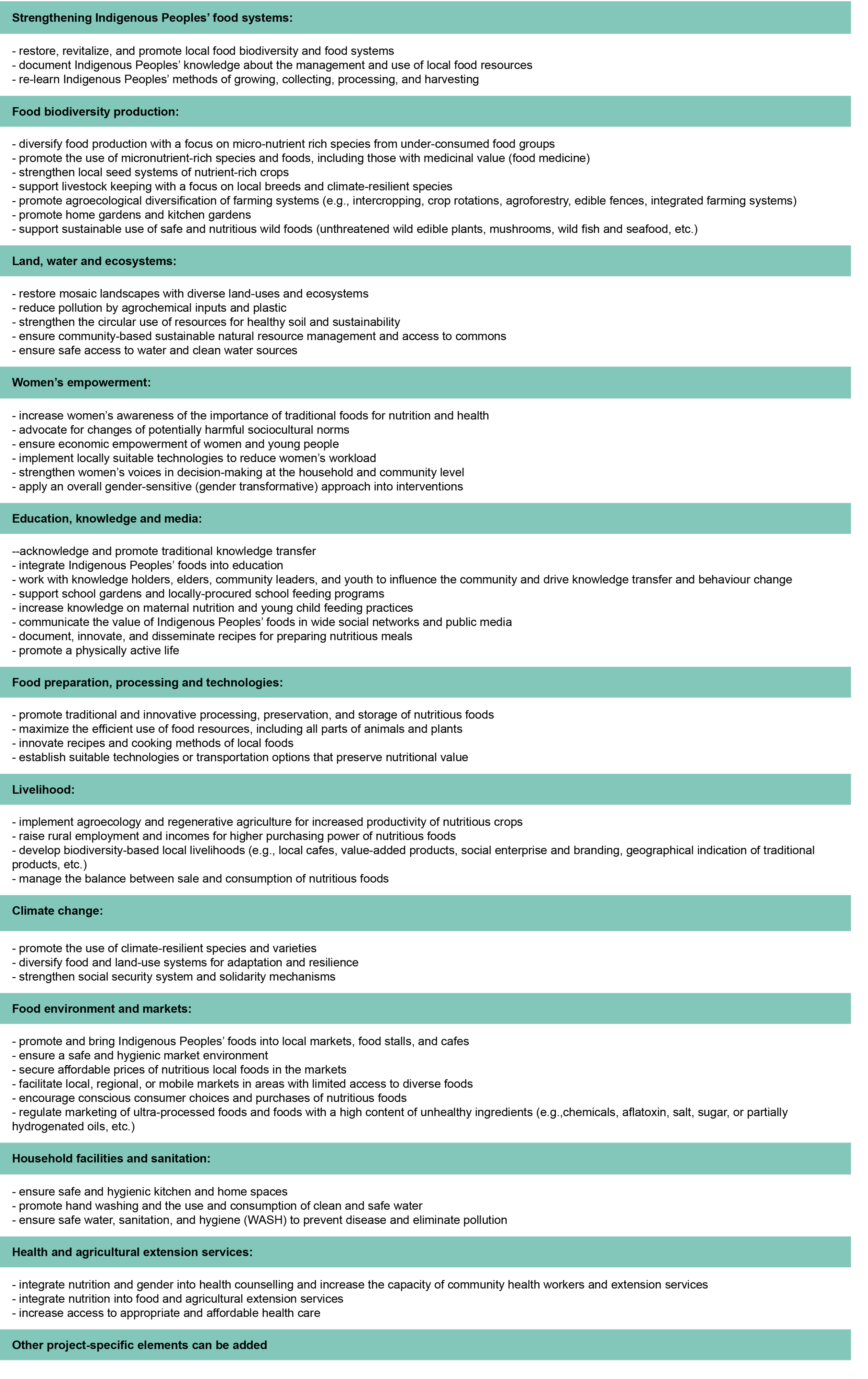
This step consists of consultations with the Indigenous Peoples’ communities and other relevant stakeholders in the project area. The consultations allow the team to share and discuss the findings of the food biodiversity assessment (STEP 1) and dietary diversity assessment (STEP 2). The aim of the community consultations is to identify foods that can be promoted to improve nutrition and generate ideas for how to strengthen local food systems. Multi-stakeholder consultations are conducted to understand a wider set of opportunities and barriers to harnessing food biodiversity and improving diets and nutrition. Project ideas from both community and stakeholder consultations are then compiled and prioritized. The consultation processes enable a better understanding of nutrition-related issues and facilitate the co-design of project interventions.
Community food prioritization and consultations are conducted in an FGD with community members of mixed age and gender if culturally appropriate. Community consultations are organized with only the community members in order to give them an opportunity to freely discuss the results of STEPS 1 and 2, and identify possible interventions. The aims of the community species prioritization and consultations are to share and validate the results of STEPS 1 and 2, identify food groups and plants or animals that can be promoted to improve nutrition, and discuss any other issues that are important for the revitalization of IPFS. An FGD on prioritization and consultation can be structured as follows:
1. Presentation and discussion of the key findings of the food biodiversity assessment (STEP 1) and dietary diversity assessment (STEP 2). Provide community members with time to reflect on the results of the STEP 1 and STEP 2;
2. Identification of nutritionally important foods (Table 3);
- Create a table of under-consumed food groups based on the results from STEP 2 (first column in Table 3) on a large piece of paper (e.g., Dark green leafy vegetables);
- For each under-consumed food group, identify plants and animals that could be promoted (based on local preferences captured by ranking exercise from STEP 1);
- Validate the results of the ranking exercise with community members and finalize the prioritization of food biodiversity. Using an open and flexible approach, participants should discuss characteristics, advantages, and disadvantages of shortlisted plants and animals. Availability and sustainable use of shortlisted foods should be also considered. A more detailed process of prioritizing crops (and varieties) is available from IFAD and Bioversity International (2021) (1).
3. After the identification of nutritionally and culturally important plants and animals, discuss a broader set of issues that affect local food systems and identify measures to increase food biodiversity and its consumption. Possible discussion topics include:
• Loss of traditional knowledge
• Loss of seeds
• Access to/availability of food biodiversity
• Sustainable use of food biodiversity
• Ecosystem degradation
• Livelihood and wellbeing
• Nutrition transition
• Nutrition information and awareness
• Health issues in the community
• Climate change
4. Generate ideas for local solutions and interventions from the community members on how to increase resiliency of local food systems and improve nutrition through greater use of biodiversity.

Multi-stakeholder consultations are organized separately and after the community consultation. The multi-stakeholder consultations consist of an FGD or workshop with community members, local experts, and other possible project actors. It is important to bring together not only key target groups, such as women and youth, but also community leaders and local food system actors from different sectors such as traditional herbalists and other knowledge holders, farmers, wild food gatherers, fisherfolk, traders, teachers, local authorities, extension workers, nutrition and health experts, development experts, women’s groups, village leaders, and religious or cultural leaders.
During the multi-stakeholder consultations, after presenting the results of STEPS 1 and 2, and the results of the community consultations (STEP 3.1), the discussion is organized around key factors that affect nutrition and health (see first column in Table 4): According to the local setting, these might be adjusted and any other relevant factors added.
The consultation is organized around the key factors affecting diet and nutrition; and for each factor, the following topics are discussed (Table 4):
- relation to diet and nutrition (and its estimated impact level);
- key issues or barriers;
- key needs and opportunities;
- ideas for actions and interventions; and
- stakeholders that may be involved.
This information can help to build cross-sectoral action that could result in a higher impact of project activities on nutrition outcomes. A multi-sectoral approach that integrates nutrition with other priorities is a commitment adopted by IFAD to mainstream nutrition in all projects (2019) (2). In addition to increasing food biodiversity and its consumption, the consultations might reveal other nutrition-related issues which could be addressed by the intervention. During the consultation, the facilitator should stimulate an open and inclusive discussion. Ideally, consensus that takes into account the voices of all stakeholders should be reached.

Box 5. Pathways for improving nutrition typical for IFAD investments and projects (IFAD, 2019) (2) may overlook the importance of local food biodiversity and the specific features of IPFS:
Typically, in an IFAD funded project, opportunities to improve nutrition may be found at various points: a) the production level, by increasing households' production of and access to nutrient-rich and nutritious foods; b) the processing level, by promoting post–harvest practices aimed to preserve and enhance nutrient quality of the food produced, and by increasing year round availability through safe processing and storage; c) the commercial level, by improving safe and healthy transport; d) the consumption level, by encouraging consumers to make healthier food choices through targeted nutrition education; e) women and/or youth engagement; and (f) water sanitation and hygiene.
Pathways for improving nutrition typical for IFAD investments and projects (2) may overlook the importance of local food biodiversity and the specific features of IPFS. See Kuhnlein 2006 (3) 2013 (4) for pathways that are appropriate for improving nutrition in Indigenous communities.
Based on the community and multi-stakeholder consultations, a list of culturally acceptable interventions can be compiled (see Table 5 for an example of possible intervention ideas).
From this list, a set of interventions are then prioritized to be developed into project activities. Prioritized interventions should be cost-effective, well-perceived or put forth by the community, empower women, and have a high probability of positive impact on diets and nutrition. Due to the increasing impacts of climate change on the local communities, prioritized interventions should also increase resilience to climate change and mitigate risks. Developing a checklist of prioritization criteria will help facilitate the selection process. Any intervention will include trade-offs and risk, which should be considered, discussed, and addressed through mitigation measures. For more details see IFAD (2019) (2) and de la Peña and Garret (2018) (5).




Made with
Landing Page Software